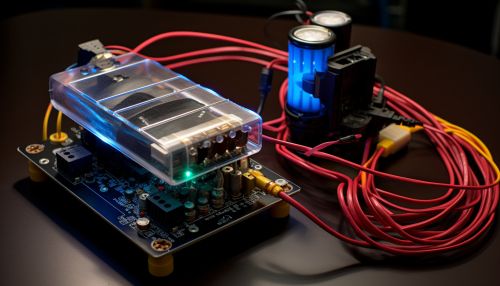FOC control
Introduction
Field-Oriented Control (FOC), also known as vector control, is a method used for variable frequency control of the stator in electric motors. This technique, which was first proposed in the 1970s, has since become a standard in industry due to its ability to improve the dynamic performance of electric motors, particularly AC motors[1].
Principle of Operation
The main principle behind FOC is the decoupling of the two main variables that affect the operation of an AC motor: torque and flux. By controlling these two variables independently, the motor can be made to behave more like a DC motor, which is easier to control[2].


Mathematical Model
The mathematical model of FOC is based on the Park's transformation, which transforms the stator current variables from a stationary reference frame to a rotating reference frame. This transformation allows the decoupling of the torque and flux variables, making it possible to control them independently[3].
Implementation
Implementing FOC requires a detailed understanding of the motor's characteristics, as well as the ability to measure or estimate the motor's rotor position and speed. Modern implementations often use digital signal processors (DSPs) or microcontrollers with built-in FOC capabilities[4].


Applications
FOC is used in a wide range of applications, including electric vehicles, industrial automation, and renewable energy systems. In these applications, FOC provides improved efficiency, better torque control, and reduced noise and vibration[5].


Advantages and Disadvantages
The main advantage of FOC is its ability to improve the dynamic performance of AC motors. However, it also has some disadvantages, including the need for complex control algorithms and the requirement for precise rotor position information[6].


See Also
References
- ↑ https://www.researchgate.net/publication/224133585_Field-oriented_control_-_A_review
- ↑ https://ieeexplore.ieee.org/document/6789809
- ↑ https://ieeexplore.ieee.org/document/6789809
- ↑ https://www.ti.com/lit/an/sprabq0/sprabq0.pdf
- ↑ https://www.researchgate.net/publication/224133585_Field-oriented_control_-_A_review
- ↑ https://www.researchgate.net/publication/224133585_Field-oriented_control_-_A_review
